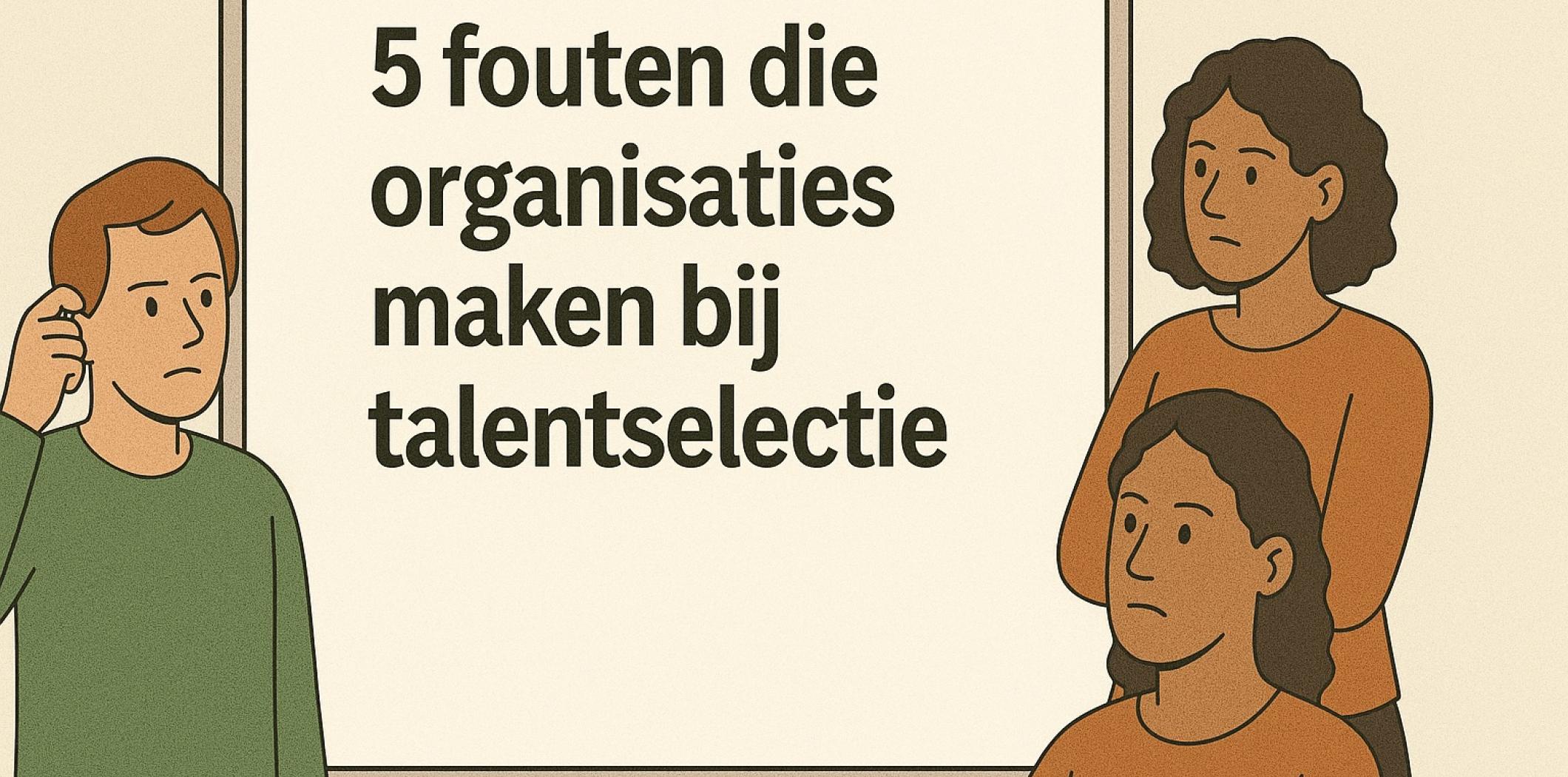Great to hear that you want to know more about our products. We would love to show you more. Please leave your details and we will contact you soon.
5 mistakes organizations make in talent selection — and how to avoid them

A mis-hire costs money, time, and energy. Yet the same patterns keep slipping into the selection process. In this article, you’ll discover the five most common mistakes — with practical, ready-to-use solutions and real-life examples.
1) Relying too much on gut feeling
Symptoms: decisions based on a “good feeling” during the interview, big differences of opinion in the hiring team, inconsistent outcomes.
Example from practice: A scale-up hired an “energetic” sales lead. In the first quarter, he missed his targets and clashed with the team. There turned out to be a mismatch in motivations and coachability that didn’t surface during the interview.
Solution: combine validated assessments (cognitive ability, personality, motivations) with structured interviews and a scorecard. Base every decision on the same criteria for all candidates.
2) Unclear role and success profile
Symptoms: long lists of “requirements,” little focus on what actually drives success, hiring managers each looking for something different.
Example from practice: For a data analyst role, “strong communication skills” was listed as a must-have, but no one defined what that meant. Result: rejections based on feeling and missed matches.
Solution: start with a job analysis: what does success look like in the first 90 days, and which outcomes matter? Define must-haves (critical competencies) and nice-to-haves (trainable). Link them to measurable behavioral anchors.
3) Unstructured interviews
Symptoms: every conversation is different, no comparability, bias due to small talk or “culture fit” based on feeling.
Example from practice: Two interviewers met the same candidate. One focused on projects, the other on hobbies. Both gave different evaluations — without solid justification.
Solution: use an interview guide per competency and ask STAR questions (Situation, Task, Action, Result). Score each question on a 1–5 scale with clear anchors.
4) Slow processes and poor candidate experience
Symptoms: weeks between interviews, unclear communication, no feedback. Strong candidates drop out or choose a competitor.
Example from practice: An IT candidate waited 12 days for feedback after a second interview. By the time the offer came, he had already signed with another company.
Solution: set SLAs (e.g. response within 48 hours), plan interview rounds in advance, and communicate each step. Share objective feedback from assessment reports — this boosts both the candidate experience and employer brand.
5) No validation after hire (unknown quality of hire)
Symptoms: success or failure is not linked back to the selection process. There’s no learning loop.
Example from practice: An organization only realized after 9 months that junior hires required much more support. Their learning curve could have been predicted based on problem-solving and learning ability — but that wasn’t measured.
Solution: measure Quality of Hire (e.g. performance after 6 months, retention, ramp-up time) and correlate with interview and assessment data. Use this to refine the role profile and selection criteria.
Checklist: apply immediately
- Define success in 90 days: goals, deliverables, context.
- Translate this into 4–6 key competencies with behavioral anchors.
- Use validated assessments (ability, personality, motivations).
- Conduct structured interviews with STAR questions and scorecards.
- Set SLAs and communication templates for a smooth candidate experience.
- Measure Quality of Hire and close the feedback loop.
Case: faster and better hiring at a tech scale-up (±250 employees)
Situation: rapid growth and high hiring pressure. Large variation in interview quality and uncertainty about culture fit.
Approach with Profiles International: job analysis, use of validated ability and personality assessments, interview guide with STAR questions, uniform scorecards, and SLAs for feedback.
Results after 6 months:
- -22% shorter time-to-hire from vacancy to offer.
- -30% less turnover within the probation period.
- +18% higher Quality of Hire score (performance & ramp-up).
- Higher candidate NPS thanks to transparent feedback from assessment reports.
What worked: clear success profile (first 90 days), objective measurement of learning and problem-solving ability, and process discipline (same questions, same weighting).
Client quote
“Thanks to the combination of assessments and STAR interviews, we saw noticeably fewer mismatches and faster ramp-up within just one quarter.”
— Head of People, tech scale-up
More objective selection, better hires.
Profiles International helps organizations use validated assessments for selection and development — GDPR-compliant and practically applicable.
Want to see how this fits your hiring process? Schedule a short demo.
About Profiles International: specialist in validated assessments for selection and development. Together we build better decisions — for candidates, teams, and organizations.
